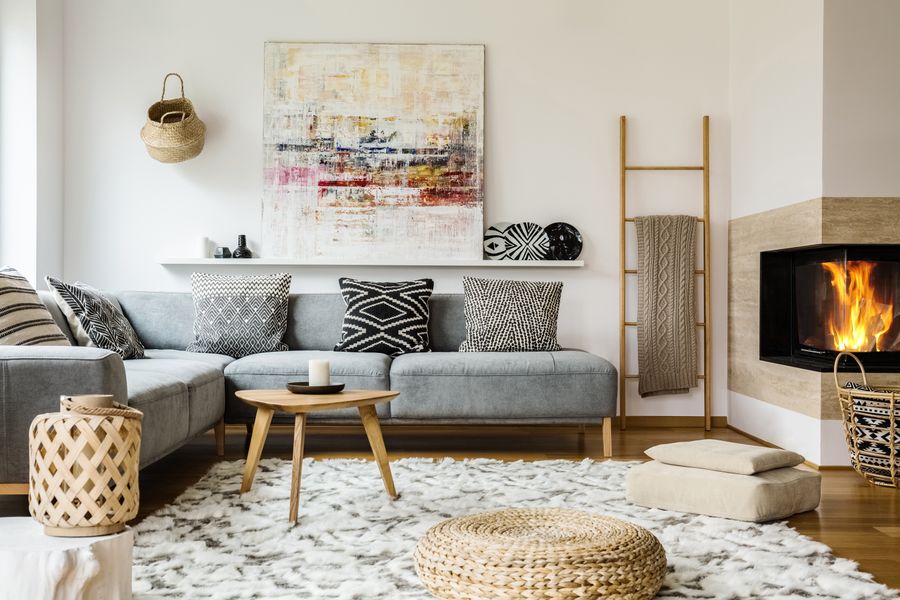On average, landlords will spend 1.5x their monthly rent collection each year on maintenance to their property. These figures indicate that there is room for landlords to increase their margins by making their home more durable in order to avoid common types of accidental damage caused by tenants.
Following are a few ways that landlords can build durability into their properties to make them less susceptible to the most common types of accidental damage.
Replace Wool Carpets and Use Synthetic Materials Instead
Spilled drinks, food, and muddy shoes are some of the most common types of accidental damage that can stain carpets. Although wool carpets feel the nicest underfoot, the absorbent nature of the material makes it difficult to remove stains.
Synthetic materials, designed for stain resistance, are a better option for carpets. There are three main options, depending on your budget and the level of durability that you want. These are:
Polyester: Polyester is the cheapest durable material available, costing about $2 per square foot. It offers resistance to water based stains (spilled drinks for example) but will still soak up any oil based stains from food or dirt. Another disadvantage of polyester is that it can feel somewhat “cheap” and synthetic, so more choosy prospective tenants may be put off by such carpeting.
Nylon: Nylon carpets are slightly more expensive, costing around $3 per square foot. They offer a similar level of durability to polyester, being resistant to water, but not oil-based stains. However, they feel softer to the touch.
Triexta: Triexta carpets offer the highest level of protection from both water and oil based stains. The material is slightly more expensive than both polyester and nylon, costing around $4 per square foot. However, given its high level of resistance to oily stains, it is the best option if you are planning to lease out a home to tenants with pets, as it will be the most protected from pet-related stain damage.

Related: Home Repairs And Maintenance Requests: TenantCloud Property Management Solutions
Use Semi-gloss Paint for Interior Walls
Flat paint often stains and scratches very easily, meaning that landlords are often left with the expensive job of having to repaint walls in between tenancies. Glossier paints are easier to wash, but any touch-ups made to the original paint job are very noticeable - so total repainting is still required every few years.
Semi-gloss paint offers the best of both worlds, allowing your tenants to clean smaller stains themselves with warm water and a small amount of cleanser. Larger stains can be painted over without having to repaint the entire wall.
Semi-gloss paint generally costs $2-3 per gallon more than flat paint. This equates to only $8 extra to repaint the walls of a medium sized room (1000 square foot). The additional cost of the paint is therefore easily offset by the savings that you’ll make in labor.
Protecting from Scratches: Door Stoppers and Felt Pads
The two most common causes of dents and scratches to your walls and floors are door handles and the feet of moving furniture.
Both of these hazards can be mitigated by fitting door stoppers to either the back of a door or to the baseboards of walls behind a door, and by sticking felt pads to the feet of furniture.

Not only should you add felt pads to the feet of all the furniture that comes with your property, but you should also make a rule in your lease agreement that all furniture a tenant brings into the property should also be fitted with felt pads. In this case, if a tenant fails to affix felt pads to their furniture, they may be liable for any scratches made to your flooring, and the costs can be deducted from their initial deposit.
Related: Fully Furnished Rentals: Pros And Cons You Should Know
Make the Distinction Between “Tenant Damage” and “Wear and Tear” Explicit in Your Lease Agreement
In the majority of lease agreements, tenants will be expected to pay for damage to the property that they directly cause, whereas landlords will be responsible for maintaining the property against general wear and tear. However, disagreements can occur when it is not made clear where one ends and the other begins.
In your lease agreement, make a list explicitly outlining what exactly constitutes tenant damage, and what constitutes wear and tear. A rule of thumb for a reasonable distinction between the two is that tenant damage can be attributed to a specific incident such as a scrape, spill or smash, whereas wear and tear occurs gradually over time.
As the scope of wear and tear depends on the quality of your original build, what constitutes tenant damage versus mere wear and tear will vary from property to property. What is important here is that the expectations are explicit and agreed upon when the contract is signed.

Conclusion
A few extra sunk costs can save you money and headaches in the long run. Building durability into your home is all about taking small, preventative measures. Although these changes may seem expensive when made together, the money and stress that you save in the long-run should be well worth it.
Appliances For Rental Property: TenantCloud Real Estate Management Software Solutions






